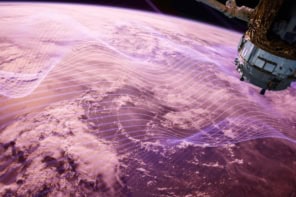The latest video report from our globe-trotting multimedia team offers an “up close and personal” take from the bleeding edge of the Earth sciences, as told to us by faculty and graduate students in the geosciences department at the University of Texas at Dallas (UT Dallas).
Filmed in the spring as an add-on to our coverage of the American Physical Society March Meeting in Dallas, the interviews cover a lot of ground – to be expected for a discipline that aims to unlock the secrets of the solar system’s most active planet.
Carlos Aiken and colleagues, for example, are using an approach called cybermapping (which integrates laser scanning, digital photography and satellite positioning, among other sensors) to build 3D photorealistic models of surface geology around the world. Their work is being applied in oil exploration and education (for virtual field trips).
Meanwhile, fellow researcher John Ferguson is applying a technique called 4D microgravity – essentially ultraprecise gravitational measurements, a few parts per billion of the Earth’s gravitational field – to monitor the success (or otherwise) of CO2 sequestration in underground reservoirs.
Another important strand of the UT Dallas geosciences programme is the use of remote sensing (specifically, space geodetic satellite observation) to understand changes in Earth systems over time. “There’s much more to it [remote sensing] than pretty pictures,” explains Alexander Braun.
“You can actually measure real physical parameters – such as the [Earth’s] gravity field or magnetic field – and, more importantly, you can detect surface deformation. The Earth is a very active planet and it is crucial for us to understand when and where it is moving.”
In the second video (below), senior scientists in the UT Dallas geosciences programme explain what attracted them to a career in the Earth sciences. It seems if you like to travel and have a hankering for the outdoors then Earth sciences could be just the ticket.
Or, as Bob Stern puts it, “It’s really a remarkable opportunity to get out and see things that no-one else gets to see – that you would never see as a tourist.”



